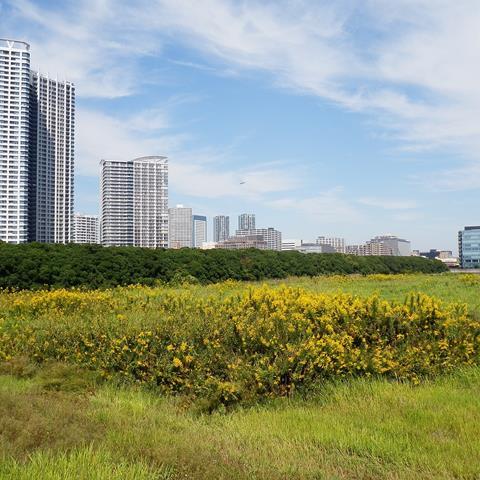Suppose we all have the power to change as we amplify on this World Refugee Day. I urge everyone to seriously brainstorm on establishing a land bank for the people affected by climate displacement.
Given the circumstances of geopolitical tension and downturn in the global economy, it seems impossible to provide inhabitable space for the millions of people around the world who would be facing a ‘nowhere to live’ situation under the increasing risks of aggravated natural hazards, as the promise of the 2015 Paris agreement to keep the global temperature below 1.5°C is uncertain. Nevertheless, creating a land bank is worth exploring for our humanity.
According to the World Bank 2018 Groundswell report, the number of internal climate migrants could reach more than 143 million by 2050 in the worst-case scenario, accounting for 86 million in Sub-Saharan Africa, 40 million in South Asia, and 17 million in Latin America. Although internal migration or cross-border migration is considered one of the strategies to cope with the livelihood shock and stress in the Global South, UNFCCC and the United Nations Security Council (UNSC) warn that the risk of massive migration caused by climate change will aggravate the consequences of conflicts and regional instability. In this context, the policy narrative in the Global North is increased border security and regulating mobility to prevent climate refugees and immigration crises. Often, the focus is on keeping people in their places and minimising migration.
Regarding climate-induced migration, much attention has been paid to reducing Global GHG emissions and promoting local solutions for climate resilience. Although migration to safer places appears to be the last resort, the relocation of people is inevitable when local actions for mitigation are limited to dealing with the damage caused by natural disasters and hydrogeological hazards. For example, World Meteorological Organization warns that the annual global sea level rise more than doubled over the last three decades (from 4.5 mm/year during 2013 – 2022 to 2.9 mm/year during 2003-2012). Even if we stop global warming by cutting emissions to net zero, it will continue to rise for centuries and pose an existential threat to small islands and low-lying coasts. Since there is a global governance deficit to cope with the looming crisis of climate displacement, developing a mechanism for a land bank initiative has become crucial both nationally and internationally.
What is a land bank?
The land bank is the idea of reserving available land for those displaced by extreme weather conditions and natural hazards. As private and public deposits, savings, and capital investments accumulate in the commercial bank, the available lands are collectively acquired, registered, reserved, and administered through private-public partnerships for relocation purposes when vulnerable communities are seriously affected by climate adversities. Not only could the government allocate public land to kick-off the process, but land acquisition with private donations and long-term leasing by investors should be combined to enhance land resources for climate displacement. To make the available land inhabitable, investments are also needed to develop infrastructure such as roads, houses, facilities, and utilities. More importantly, investment must be made to create jobs and income generation for the sustainable livelihoods of the displaced population. Depending on the the location, it would need to support local farming and off-farm livelihood development in conjunction with agricultural processing and industrial development, transportation and logistic network development, supply chain and market infrastructure improvement, tourism promotion, and so on. If efficiently done, the land bank will contribute to the economy in the region where the land is allocated.
Therefore, implementing a land bank policy is for far more than just addressing the climate crisis. It could be aimed at the pre-investment of land resources for a climate-resilient economy, where and when feasible. It is a proactive and rights-based solution for displacement to alleviate the impact of forced migration in vulnerable areas. Since managing land is always socio-politically complex and sensitive, implementing such an initiative requires substantive political capital in addition to the needs of technical, financial, and natural resources. Expanding on an initial study done by Displacement Solution and EcoDev, the conception of a climate land bank should be further sought to bridge the gap in addressing the looming crisis of climate displacement.








No comments yet